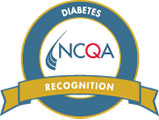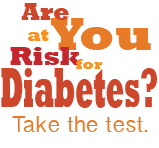Lipidology
Hyperlipidemia...
is an excess of fatty substances in the blood called lipids, largely cholesterol and triglycerides. Hyperlipidemia, in general, can be divided into two subcategories:
• Hypercholesterolemia – high levels of cholesterol
• Hypertriglyceridemia – high levels of triglycerides, the most common form of fat
Description of Hyperlipidemia
Because fat and water do not mix together, fat is complexed with protein to make the fat able to be transported in the blood. These fat-protein complexes in the blood are called lipoproteins. The best-known lipoproteins are LDL (low density lipoprotein), HDL (high density lipoprotein) and triglycerides (very low density lipoprotein).
Since every cell in the body needs cholesterol to maintain cell membranes or to secrete important compounds, LDL is the lipoprotein which transports cholesterol in the blood. Excess LDL cholesterol builds up in the artery wall and contributes to the blockage of arteries, which eventually leads to heart attacks or strokes. Population studies have clearly shown that the higher the level of LDL cholesterol, the greater risk of heart disease. This is true in men and women, in different racial/ethnic groups, and in all adult age groups. Hence, LDL cholesterol has been labeled the “bad” cholesterol.
In contrast, HDL removes excess cholesterol from the blood and back to the liver where it can be removed from the body by the bowel. The lower the level of HDL cholesterol, the more likely cholesterol builds up in the blood and the greater the risk of coronary heart disease. As a result, HDL cholesterol is commonly referred to as the “good” cholesterol. Low HDL cholesterol levels are typically accompanied by an increase in blood triglycerides levels. Studies have shown that high triglyceride levels are associated with an increased risk of coronary heart disease, but it is less clear how that happens.
Triglycerides are the common fat that you actually see in foods such as the fat you see in a steak. Dietary triglycerides or triglycerides that are made in the liver get transported in the blood in lipoproteins and the fat is broken off the lipoprotein. This fatty substance is a storage form of energy which is used by most tissues for energy utilization in muscle (skeletal muscle or the heart) or stored in fat cells.
Causes and Risk Factors of Hyperlipidemia
For most people, abnormal cholesterol levels are the result of a genetic disorder or an unhealthy lifestyle, most commonly, eating a diet high in fat. Other factors are being overweight, heavy alcohol use, lack of exercise or leading an inactive lifestyle. Common secondary causes of hypercholesterolemia (specifically, high LDL cholesterol) include hypothyroidism (low thyroid hormone levels), pregnancy, and chronic kidney diseases.
Common secondary causes of hypertriglyceridemia include diabetes, excess alcohol intake, obesity, and certain prescription medications (such as glucocorticoids, estrogen, diuretics and beta blockers).
Several genetic disorders that are passed down through families lead to abnormal cholesterol and triglyceride levels. They include:
• Familial combined hyperlipidemia – the most common hyperlipidemia which is associated with high cholesterol, high triglycerides and/or low HDL.
• Familial dysbetalipoproteinemia – a rare genetic hyperlipidemia associated with an inability of the liver to remove cholesterol and triglycerides.
• Familial hypercholesterolemia – a genetic hyperlipidemia associated with high LDL because the receptors to remove LDL from the blood are reduced.
• Familial hypertriglyceridemia – a hyperlipidemia associated with high triglycerides which can be due to an overproduction or decreased removal of this fat.
• Elevated levels of another risk factor called Lp(a) which is an abnormal lipid particle that causes blockages of arteries.
Hyperlipidemia, along with diabetes, hypertension (high blood pressure), positive family history, and smoking are all major risk factors for coronary heart disease.
Symptoms of Hyperlipidemia
Hyperlipidemia usually has no noticeable symptoms and tends to be discovered during routine lab testing or evaluation for atherosclerotic cardiovascular disease. However, physical examination may reveal deposits of cholesterol (known as xanthomas) under the skin (especially around the eyes, tendons in the hands, or along the Achilles tendon) in individuals with familial forms of the disorder or in those with very high levels of cholesterol in the blood. Individuals with hypertriglyceridemia may develop numerous pimple-like lesions across the body. Extremely high levels of triglycerides may also result in pancreatitis which is a severe inflammation of the pancreas that may be life-threatening.
Diagnosis of Hyperlipidemia
Diagnosis is typically based on medical history, physical examination, and blood tests (done after overnight fasting) in order to determine the specific levels of LDL cholesterol, HDL cholesterol and triglycerides, more specific testing can also aid the physician in a genetic diagnosis. Some national guidelines recommend having your first screening cholesterol test at age 20 or earlier in families where there is a high risk for hyperlipidemia. It is important to work with your health care provider to arrange laboratory testing and set your cholesterol goals.
General targets are:
• LDL: 70-100 mg/dL (lower numbers are better) and individualization is needed
• HDL: more than 40 mg/dL in men and more than 50 mg/dL in women (higher numbers are better)
• Triglycerides: 10-150 mg/dL (lower numbers are better)
Current national guidelines suggest a LDL cholesterol goal of <100 mg/dL for those at risk, (<70 mg/dL in highest risk) in those individuals already with heart disease or diabetes and < 55 in patients with recurrent vascular events. Your doctor can calculate your “risk score” for heart disease using the American Heart Association Risk Calculator. This score can then be used to determine whether you need to start taking medication to lower your LDL cholesterol. Other goals are set for those who have high lifetime risk for vascular disease, such as those with a genetic disease which cause Atherosclerosis.
Although there are no firm treatment targets for HDL cholesterol or triglycerides, most experts agree that optimal HDL cholesterol levels are >40 mg/dL for men and >50 mg/dL for women. In addition, the optimal triglyceride levels are <150 mg/dL.
If cholesterol results are abnormal, your health care provider may also test for other causes such as a blood sugar (glucose level) to look for signs of diabetes, thyroid function tests to check for an underactive thyroid gland, and test for screening for kidney disease.
Treatment of Hyperlipidemia
Treatment of hyperlipidemia always starts with dietary changes, weight reduction and exercise. There are steps everyone can take to improve their cholesterol levels, help prevent vascular disease and a heart attack. Some key lifestyle changes are:
• Eat foods that are naturally low in fat and cholesterol, plus increase foods containing fiber. These include whole grains, fruits, and vegetables. Use low-fat toppings, sauces, and dressings
• Look at food labels. Avoid foods that are high in saturated fat and trans fat, replacing with monosaturated and unsaturated fats.
• Exercise regularly
• Lose weight if you are overweight
• Quit smoking. This is a very important change you can make to reduce your risk of heart disease and stroke.
If lifestyle modifications cannot bring about optimal lipid levels, then medications may be necessary.
Medications most commonly used to treat high LDL cholesterol levels are statins; lovastatin (Mevacor), pravastatin (Pravachol), atorvastatin (Lipitor), simvastatin (Zocor), rosuvastatin (Crestor), and pitavastatin (Livalo). These medications work by reducing the production of cholesterol within the body. Although safe and effective, statins may have side effects such as headache, constipation or stomach upset. Vary rarely they cause muscle or liver damage, typically when used in combination with other medications. Thus, it is important to let your doctor know whether you develop any generalized body ache or side effects when starting a new medication such as a statin.
Other medications used to treat high LDL cholesterol levels include ezetimibe (Zetia), which decreases the absorption of cholesterol from the gut; bile-acid sequestrates (Welchol, Colestipol, Cholestyramine), which binds the cholesterol to bile salts which are eliminated from the body; and Nexletol which works to lower LDL cholesterol synthesis in a way different from the statins.
PCSK9 inhibitors such as Prealuent or Repatha have greatly added another tool to lower LDL cholesterol by a different mechanism of action. These medications work in the liver to increase the receptors which remove the LDL cholesterol from the blood. This injectable medication is reserved for combination therapy as listed above and typically requires special insurance approval.
In some patients, lifestyle modifications and medications are still not enough to lower the LDL cholesterol to a reasonable level. For these patients, LDL apheresis may be an effective treatment which removes LDL cholesterol from the blood. Using a device known as the LIPOSORBER System, a portion of the patient's blood circulates outside the body and over a column which removes the LDL. During the procedure, the plasma (the liquid in which the cells are suspended) is separated from the whole blood and the LDL cholesterol is then removed from the plasma. Then, the plasma and blood are recombined and returned back to the patient. The LIPOSORBER consists of disposable components (which are discarded after each treatment) and an automated computerized machine that controls and monitors the LIPOSORBER treatment. This treatment can lower LDL cholesterol levels between 70 and 80% after a single treatment. However, this significant lowering of the LDL cholesterol level is not maintained because most patients overproduce LDL cholesterol and medical treatment cannot cure this underlying problem. Thus, the patient's LDL cholesterol level begins to increase (or rebound) after treatment, eventually returning to baseline in about two weeks. Apheresis treatment is regarded as a lifelong therapy which typically is performed every two weeks and is reserved for those patients who meet special criteria for insurance coverage. Patients must continue their diet and cholesterol-lowering medications after starting the treatment.
Hypertriglyceridemia is commonly treated with a class of medications called fibrates. Included in this class are gemifibrozil (Lopid) and fenofibrate (Tricor). Fibrates are safe and effective but side effects may cause upset stomach, gallstones or even muscle damage when used in combination with statin medications. Another medication which may lower triglycerides are fish oils, which can be either prescribed (Vascepa or Lovaza) or purchased over the counter.
Expectations
High cholesterol levels can lead to hardening of the arteries, also called atherosclerosis. This occurs when fat, cholesterol, and other substances build up in the walls of arteries and form hard structures called plaques. Over time, these plaques can block the arteries and cause heart attack (MI), stroke (CVA/TIA), and/or peripheral artery disease (PAD). Lifestyle changes and medications can lower cholesterol levels and prevent these problems in many people. Disorders that are passed down through families often lead to higher cholesterol levels that are harder to control and that is why it is important to discuss the family history with your physician.
![]()












